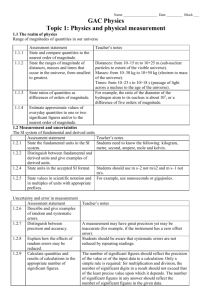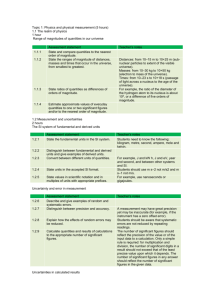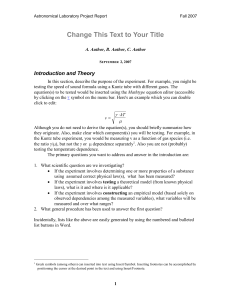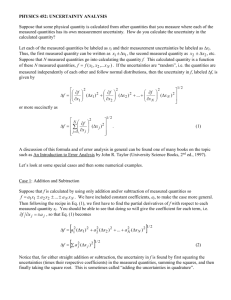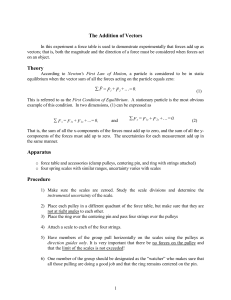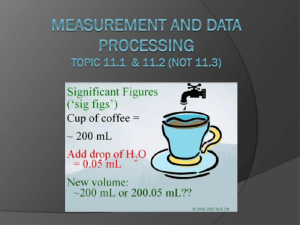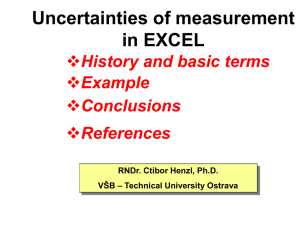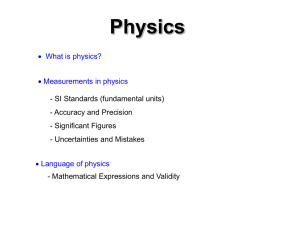Uncertainty of Color Quantities by Numerical Approach
advertisement
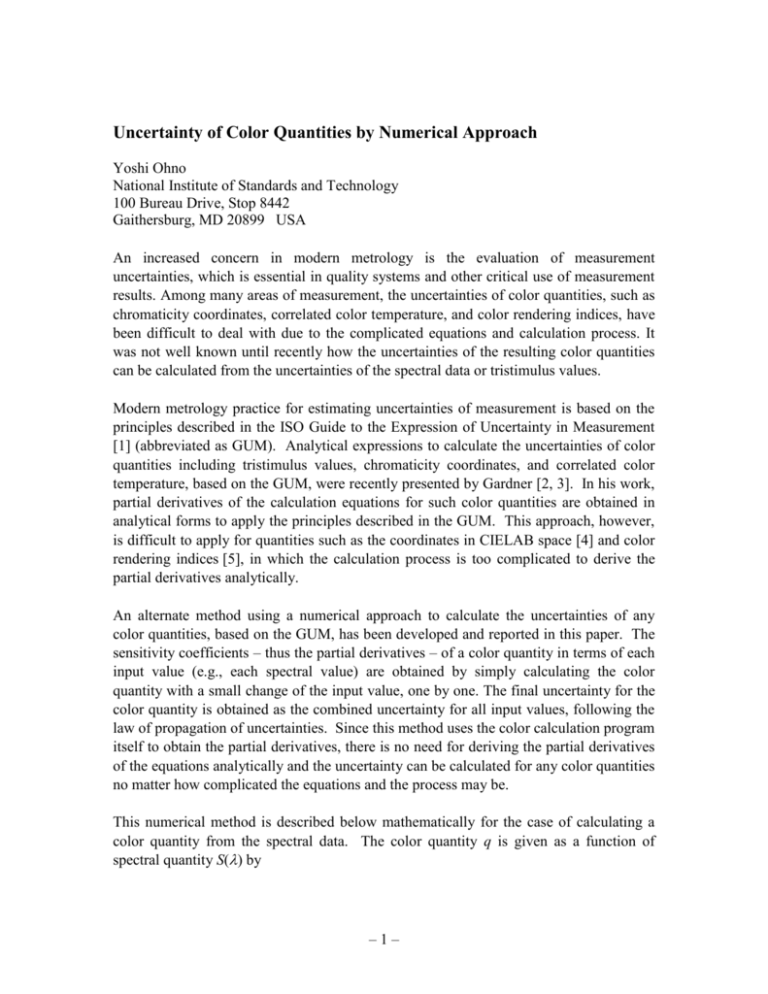
Uncertainty of Color Quantities by Numerical Approach
Yoshi Ohno
National Institute of Standards and Technology
100 Bureau Drive, Stop 8442
Gaithersburg, MD 20899 USA
An increased concern in modern metrology is the evaluation of measurement
uncertainties, which is essential in quality systems and other critical use of measurement
results. Among many areas of measurement, the uncertainties of color quantities, such as
chromaticity coordinates, correlated color temperature, and color rendering indices, have
been difficult to deal with due to the complicated equations and calculation process. It
was not well known until recently how the uncertainties of the resulting color quantities
can be calculated from the uncertainties of the spectral data or tristimulus values.
Modern metrology practice for estimating uncertainties of measurement is based on the
principles described in the ISO Guide to the Expression of Uncertainty in Measurement
[1] (abbreviated as GUM). Analytical expressions to calculate the uncertainties of color
quantities including tristimulus values, chromaticity coordinates, and correlated color
temperature, based on the GUM, were recently presented by Gardner [2, 3]. In his work,
partial derivatives of the calculation equations for such color quantities are obtained in
analytical forms to apply the principles described in the GUM. This approach, however,
is difficult to apply for quantities such as the coordinates in CIELAB space [4] and color
rendering indices [5], in which the calculation process is too complicated to derive the
partial derivatives analytically.
An alternate method using a numerical approach to calculate the uncertainties of any
color quantities, based on the GUM, has been developed and reported in this paper. The
sensitivity coefficients – thus the partial derivatives – of a color quantity in terms of each
input value (e.g., each spectral value) are obtained by simply calculating the color
quantity with a small change of the input value, one by one. The final uncertainty for the
color quantity is obtained as the combined uncertainty for all input values, following the
law of propagation of uncertainties. Since this method uses the color calculation program
itself to obtain the partial derivatives, there is no need for deriving the partial derivatives
of the equations analytically and the uncertainty can be calculated for any color quantities
no matter how complicated the equations and the process may be.
This numerical method is described below mathematically for the case of calculating a
color quantity from the spectral data. The color quantity q is given as a function of
spectral quantity S() by
–1–
q f S( ) f S( 1 ), S(2 ),......, S(n ).
(1)
where q can be any color quantity such as correlated color temperature or the general
color rendering index Ra which are calculated simply from S(). Then, the partial
derivative of q in terms of S() is numerically obtained at each wavelength by
q
f {S(1 ),S(2 ),.....,S( i ) S,.....S( n )} f {S()}
; i 1,..., n
S( i )
S
(2)
where ∆S is chosen to be small enough relative to the average value of S(). Assuming
that the input quantities are not correlated, the combined standard uncertainty u(q) of the
color quantity q is then given by
2
q 2
u(q)
u S(i ).
i 1 S( i )
n
(3)
where u{S(i)} is the standard uncertainty of S(i).
For verification, the standard uncertainties of the (u, v) chromaticity coordinates and
correlated color temperature (CCT) have been calculated with this numerical method, for
the spectral distribution of source ‘S6’ (xenon lamp) used in Gardner’s analysis [3], with
a relative standard uncertainty of 0.01 for all the spectral values. The uncertainties
obtained (0.00021 and 0.00017 for u, v and 19.2 K for CCT) agreed with the Gardner’s
results [3]. Further, the numerical method successfully gave the standard uncertainty of
the general color rendering index Ra to be 0.17. This method can be applied to the
uncertainties of any other color quantities including the CIELAB coordinates and
metamerism indices.
The method can also be applied to the uncertainties of photometric quantities such as
luminous intensity calculated from the spectral radiant intensity of a lamp, illuminance
responsivity, the value of f1’, and spectral mismatch correction factors of a photometer
from the uncertainties of its spectral responsivity, and any other quantities calculated
from spectral data.
References
1. ISO, Guide to the Expression of Uncertainty in Measurement (1993).
2. J. L. Gardner, Uncertainty estimation in colour measurement, Color Research and
Application, vol 25, 349-355 (2000).
3. J. L. Gardner, Correlated Colour Temperature – Uncertainty and Estimation,
Metrologia – NEWRAD’99 Issue (in print).
4. CIE Publication 15.2, Colorimetry, Second Edition (1986).
5. CIE Publication 13.3, Method of Measuring and Specifying Colour Rendering
Properties of Light Sources (1995).
–2–
